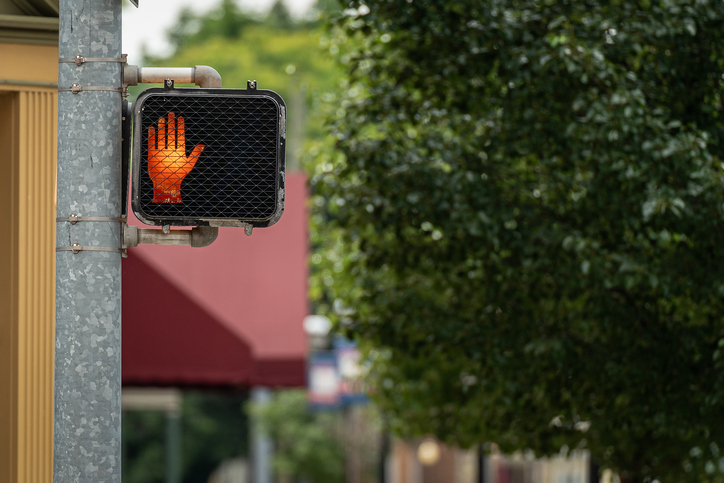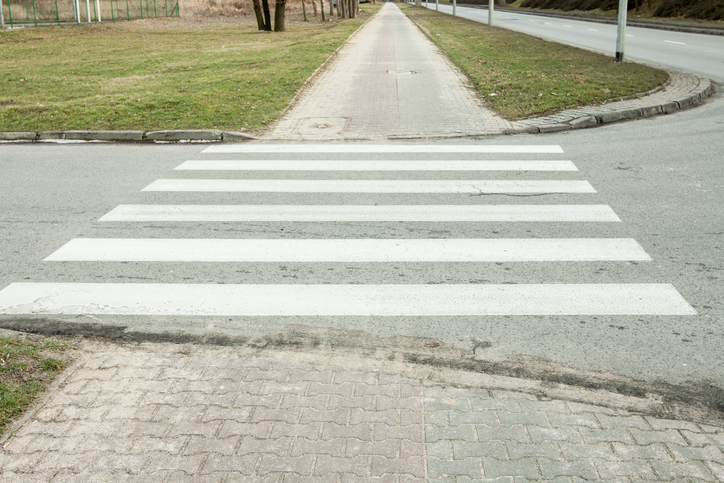Do pedestrians have the right of way? Under California law, pedestrians do not always have the right of way. In certain situations, pedestrians can be found liable for a pedestrian accident. Whether you’re driving or walking around in Santa Ana or the greater Orange County area, it’s important to know pedestrian right-of-way laws.
Our Santa Ana pedestrian accident attorney can help you pursue a personal injury claim against the negligent driver. Call Riverview Accident Lawyers to schedule a free case evaluation today.
What is the Duty of Care?
In California, all road users, including drivers and pedestrians, owe each other a duty of care. This duty entails exercising reasonable caution and taking necessary precautions to prevent harm to others. For drivers, this means being attentive, obeying traffic signs and other traffic control devices, and following right-of-way laws. Pedestrians must also exercise care by using crosswalks when available, obeying traffic laws, and looking both ways before crossing.
California’s Pedestrian Crosswalk Laws
What is Considered a Crosswalk?
In California, a crosswalk is defined as any portion of the roadway distinctly marked for pedestrian crossing. However, crosswalks may be marked or unmarked.
Marked crosswalks can be identified by painted white or yellow lines on the road and are typically found at traffic lights, stop signs, or other traffic control devices. Unmarked crosswalks exist at intersections where sidewalks meet, even if there are no visible markings. It’s crucial for pedestrians to use designated crosswalks whenever possible to ensure their safety and avoid potential accidents.
While drivers must yield to pedestrians within marked and unmarked crosswalks, pedestrians should always exercise caution and ensure it is legal and clear to cross.
California Pedestrian Right Of Way Traffic Laws
- According to California Vehicle Code (CVC) Section 21950, drivers must yield the right of way to pedestrians crossing the roadway within marked or unmarked crosswalks.
- Pedestrians must also uphold a duty of care when crossing a roadway, which means that they must exercise caution and use reasonable care for their own safety.
- No pedestrian may unnecessarily stop or delay traffic while in a marked or unmarked crosswalk.
- Pedestrians may not suddenly leave a curb or other place of safety and walk or run into the path of an oncoming vehicle, causing an immediate hazard.
- CVC Section 21954 requires pedestrians to yield the right of way to vehicles when crossing outside a marked or unmarked crosswalk at any point other than an intersection. However, drivers must still uphold their duty of care, look for pedestrians, and avoid hitting them.
Driver’s Duty of Care to Clearly Blind Pedestrians
Blind pedestrians face unique challenges when navigating California’s streets. Totally or partially blind pedestrians often use guide dogs or white canes to navigate. Drivers must be aware of these indicators of visual impairment and must yield the right-of-way to ensure the safety of the pedestrian.
What to Do After a Pedestrian Accident
If you’re involved in a pedestrian-vehicle accident, take the following steps:
- Check for injuries: Immediately check yourself and others involved. If there are injuries, you should call the police or ask someone to call 911 for you. If you can, it’s best to move out of the road so you’re not in the path of oncoming traffic. If you’re injured, you should not move unless it’s essential.
- Call the police: Contact law enforcement to report the accident and request emergency medical services. It’s important to ensure you obtain a copy of the police report.
- Exchange information: Exchange contact and insurance information with the other party involved in the accident. Ensure you get their driver’s license information, license plate number, current address, and insurance policy number.
- Document the scene: Take photos of the accident scene, including any visible injuries, road conditions, broken glass, skid marks, and property damage.
- Seek medical attention: Even if you feel fine, it is crucial to seek medical attention promptly. Injuries to the internal organs or spinal cord can be life-threatening if not treated immediately. Ensure you document your injuries and follow your doctor’s prescribed treatment plan.
- Don’t speak to the driver’s insurance company: The driver’s insurer may contact you for a statement. Avoid discussing the accident or your injuries with insurance companies. Anything you tell them can be against you to minimize your claim. Insurance companies don’t have your best interests in mind and may offer a low settlement that doesn’t cover your damages.
- Contact a pedestrian accident lawyer: Consult an experienced pedestrian accident attorney who will protect your rights and inform you of your legal options.
Comparative Negligence in California Pedestrian Accidents
California law follows the legal principle of comparative negligence. This means the plaintiff can still recover damages if they were partially at fault for the accident. Whether you are the driver or pedestrian injured in an accident, you will need evidence to hold the other party responsible for their negligence. Therefore, if both the pedestrian and the driver share fault for the accident, the amount of compensation awarded to the pedestrian may be reduced based on their percentage of fault.
For example, if a pedestrian is found to be 20% at fault, their compensation may be reduced by 20%. If your damages were $100,000, you may be able to claim $80,000 (80% of your total damages). However, if the pedestrian’s negligence is deemed to be the sole cause of the accident, their ability to recover compensation may be limited.
If you were injured in a pedestrian-car accident, it’s crucial to consult with an experienced attorney who will safeguard your rights and pursue fair compensation for your injuries and losses.
Proving Fault in Pedestrian Accidents
Determining fault in pedestrian accidents can be complex and often requires meticulous investigation. An experienced pedestrian accident attorney can help you gather compelling evidence to prove the other party’s liability.
This can include surveillance footage, police reports, witness statements, and medical records. To establish fault, they will investigate factors such as traffic signals, speed limits, weather conditions, and police reports.
What Compensation is Available in Pedestrian Accident Cases?
Pedestrian vehicle accidents often have devastating consequences. In 2020, there were about 104,000 emergency department visits of pedestrians who were treated for non-fatal traffic accident injuries. Victims of pedestrian accidents in California may be entitled to various types of compensation for their injuries and losses, including:
- Medical expenses
- Lost wages
- Pain and suffering
- Property damage
- Loss of enjoyment of life
- Permanent disability
- Scarring or disfigurement
- Wrongful death
Contact an Experienced Santa Ana Pedestrian Accident Lawyer
If you or a loved one was hit by a car while walking, it’s essential to consult with an experienced pedestrian accident lawyer in Santa Ana. A personal injury attorney will protect your rights and deal with the driver’s insurance company on your behalf.
At Riverview Accident Lawyers, we are committed to helping injured pedestrians obtain justice and recover maximum compensation for their injuries and losses. Call our award-winning personal injury law firm today for a free consultation.



